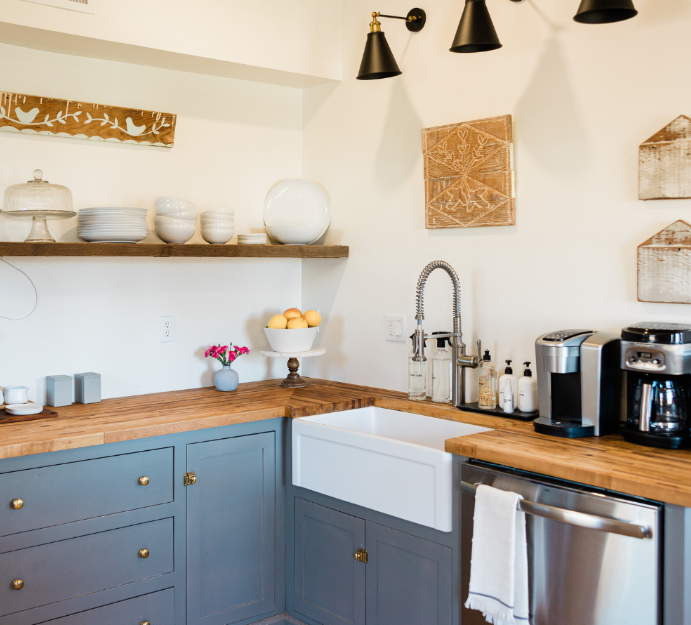Should You Mix Interior Metal Hardware?

Posted On: Jul 12, 2023
Categories: Interiors Inspiration
Should You Mix Interior Metal Hardware?
When it comes to interior design, the choices we make can greatly impact the overall aesthetic and ambience of our living spaces.
From colour schemes to furniture selection, every detail plays a crucial role. One aspect that often sparks debate is whether to mix interior metal hardware.
Should brass door handles coexist with chrome taps? Can copper pendant lights complement a chrome chandelier?
Up until a few years ago, mixing metals was considered a taboo topic in an interior, but the tide is changing, and it is now considered a visually exciting way to dress an interior…
Should You Mix Interior Metal Hardware?
Understanding The Role of Metal Hardware in Interior Design:
Before we explore the idea of mixing different metal finishes, it's important to understand the role that metal hardware plays in interior design.
Metal accents can add elegance, sophistication, and a touch of modernity to any space.
Whether it's the sleekness of stainless steel, the warmth of brass, or the rustic charm of copper, metal hardware has the power to enhance the overall aesthetic of a room.
Creating Harmony Through Complementary Tones:
One way to achieve a cohesive look when mixing metal hardware is to focus on complementary tones.
By selecting metals with similar undertones, you can create a sense of harmony within your space. For example, brass and gold tones work well together, as do silver and chrome finishes.
By maintaining a consistent colour temperature, you can create a visually pleasing environment where different metal elements complement each other.
Contrasting for Impact:
While harmonising tones can create a sense of unity, intentionally contrasting metal hardware can also make a bold design statement.
By combining finishes with opposing characteristics, you can add visual interest and create focal points within a room.
For instance, pairing matte black hardware with polished nickel accents can result in a striking contrast that adds drama and depth to your design.
Maintaining a Balanced Composition:
When mixing metal hardware, it's essential to maintain a balanced composition. Too much of one metal finish can overpower the others, creating an unbalanced and disjointed look.
To achieve a harmonious blend, consider using a dominant metal finish throughout the space while incorporating other finishes as accent pieces.
This way, the different metals can coexist and contribute to a well-thought-out design.
Considering the Existing Elements:
Another factor to consider when mixing metal hardware is the existing elements in the space.
Take into account the colour palette, furniture, and overall style of the room. If you have a predominantly modern or minimalist aesthetic, metals like stainless steel or brushed nickel might align better with the overall design.
On the other hand, if your space leans toward a rustic or vintage look, brass or bronze finishes could complement the existing elements beautifully.
The Role of Textures and Patterns:
In addition to metal finishes, textures and patterns can also influence the success of mixing metal hardware.
For example, a room with a smooth and polished aesthetic might benefit from the addition of hammered or textured metals to add depth and contrast.
Similarly, incorporating patterns such as geometric shapes or intricate designs in metal hardware can elevate the visual appeal of the space.
Creating Visual Flow and Unity:
To achieve visual flow and unity when mixing metal hardware, consider incorporating other design elements that tie the room together.
Elements such as wall colour, flooring materials, or fabrics can help create a cohesive backdrop that allows the different metal finishes to shine.
By establishing a unified visual language, you can ensure that the combination of metal hardware feels intentional and harmonious.
Considering Practicality and Maintenance:
While the visual appeal of mixing metal hardware is important, it's equally essential to consider practicality and maintenance.
Different metal finishes may require specific care and cleaning methods. For instance, brass hardware may need occasional polishing to maintain its luster, while stainless steel is known for its durability and ease of cleaning.
Assess the practicality of each metal finish and choose options that align with your lifestyle and maintenance preferences.
Experimenting and Personal Expression:
While guidelines and recommendations can be helpful, it's important to remember that interior design is also about personal expression and creativity.
Don't be afraid to experiment and push boundaries when it comes to mixing metal hardware. After all, your home should reflect your unique taste and personality. Take inspiration from design magazines, online platforms, and real-life examples to spark your imagination and find inspiration for combining different metal finishes in innovative ways.
Mixing interior metal hardware can be a creative and visually appealing way to enhance your home's design.
By understanding the role of metal hardware, creating harmony through complementary tones or intentional contrasts, and maintaining a balanced composition, you can achieve a cohesive and stylish look.
Consider the existing elements, textures, patterns, and practicality when making your choices.
Seek professional guidance if needed and don't be afraid to experiment and express your personal style. With thoughtful consideration and a touch of creativity, mixing interior metal hardware can elevate your home's aesthetic and create a truly remarkable living space.
